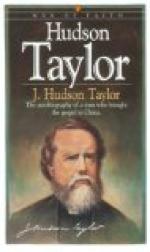=New Amsterdam.=—For about fifty years after the Dutch Settlement the island of Manhattan was known as New Amsterdam. Washington Irving, in his Knickerbocker History, has surrounded it with a loving halo and thereby given to the early records of New York the most picturesque background of any State in the Union.
* * *
The city bright below, and far away
Sparkling in golden light his own romantic
Bay.
Fitz-Greene Halleck.
* * *
Among other playful allusions to the Indian names he takes the word Manna-hatta of Robert Juet to mean “the island of manna,” or in other words a land flowing with milk and honey. He refers humorously to the Yankees as “an ingenious people who out-bargain them in the market, out-speculate them on the exchange, out-top them in fortune, and run up mushroom palaces so high that the tallest Dutch family mansion has not wind enough left for its weather-cock.”
What would the old burgomaster think now of the mounting palaces of trade, stately apartments, and the piled up stories of commercial buildings? In fact the highest structure Washington Irving ever saw in New York was a nine-story sugar refinery. With elevators running two hundred feet a minute, there seems no limit to these modern mammoths.
=The Dutch and the English.=—From the very beginning there was a quiet jealousy between the Dutch Settlement on the Hudson and the English Settlers in Massachusetts. To quote from an old English history, “it was the original purpose of the Pilgrims to locate near Nova Scotia, but, upon better consideration, they decided to seat themselves more to the southward on the bank of Hudson’s River which falls into the sea at New York.”
To this end “they contracted with some merchants who were willing to be adventurers with them in their intended settlement and were proprietors of the country, but the contract bore too heavy upon them, and made them the more easy in their disappointment. Their agents in England hired the Mayflower, and, after a stormy voyage, ’fell in with Cape Cod on the 9th of November. Here they refreshed themselves about half a day and then tacked about to the southward for Hudson’s River.’
“Encountering a storm they became entangled in dangerous shoals and breakers and were driven back again to the Cape.” Thus Plymouth became the first English settlement of New England. Another historian says that it was their purpose “to settle on the Connecticut Coast near Fairfield County, lying between the Connecticut and Hudson’s River.”
* * *
Before
his sight
Flowed the fair river free and bright,
The rising mist and Isles of Bay,
Before him in their glory lay.
Robert C. Sands.
* * *
From the very first the Dutch occupation was considered by the English as illegal. It was undoubtedly part of the country the coasts of which were first viewed by Sebastian Cabot, who sailed with five English ships from Bristol in May, 1498, and as such was afterwards included in the original province of Virginia. It was also within the limits of the country granted by King James to the Western Company, but, before it could be settled, the Dutch occupancy took place, and, in the interest of peace, a license was granted by King James.




